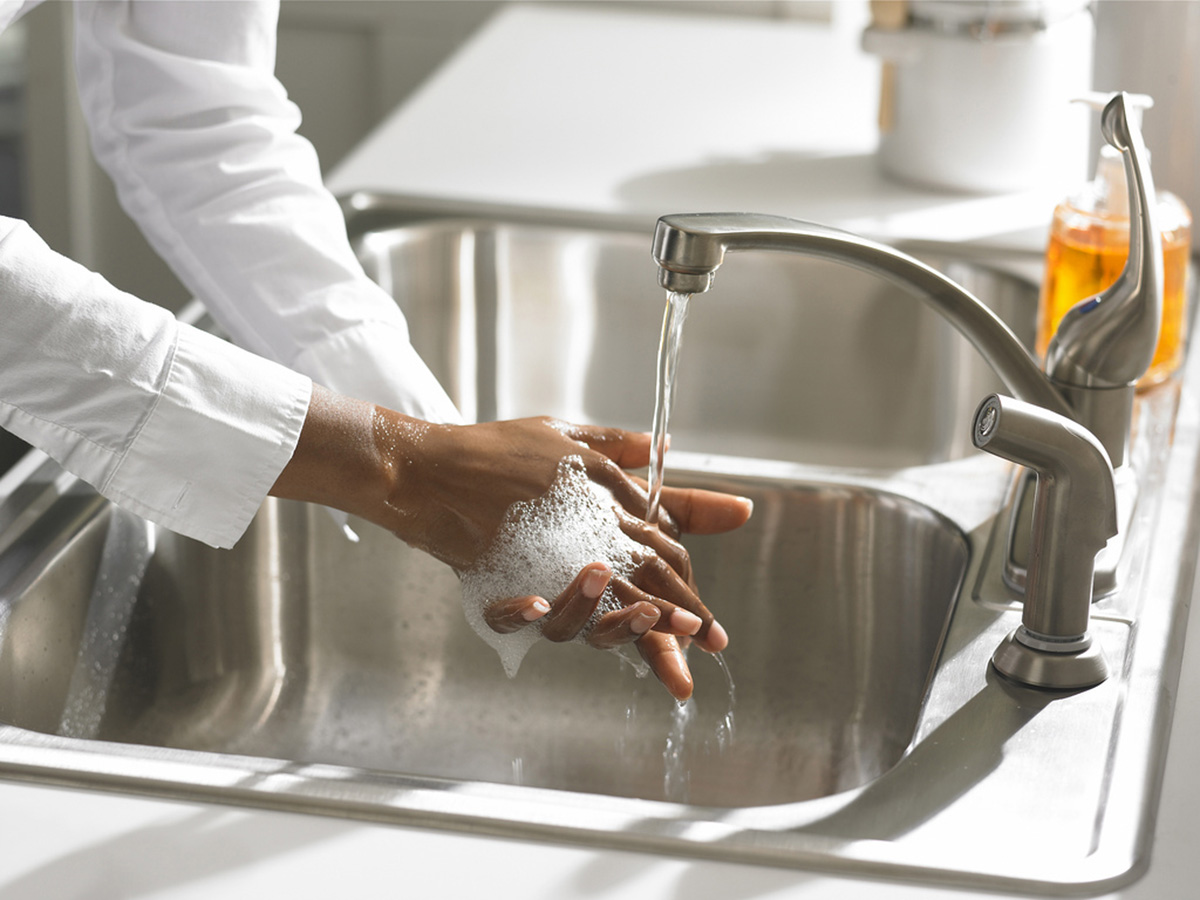Table of Contents
By stopping the growth of bacteria rather than killing them, the standard antibacterial soap ingredient triclosan gives them opportunities to become antibiotic-resistant.
The problem of antibiotic resistance generated by antibacterial soaps is especially acute in the case of methicillin-resistant Staphyloccoccus aureus, better known as MRSA. Triclosan helps staph bacteria survive long enough to pass on a gene that confers resistance to vancomycin, the medication of last resort for life-threatening MRSA infections. When vancomycin won't work, there's not a lot left for saving the life of a patient with a severe MRSA infection. Triclosan actually increases the risk of the problem it is meant to prevent.
So if it is counterproductive to use sanitizers that contain the carcinogenic chemical triclosan, what should you do?
- Vacuum regularly. Triclosan is used in products that are applied to the skin. As skin cells die, they flake away and become dust. These dust particles carry triclosan with them. Coming into contact with dust is as problematic in the same way that using hand sanitizers is.
- For the reasons listed above, dust regularly. Discard the dust cloth after you have used it.
- Avoid sunscreen and skin care products that list methyl-, ethyl-, propyl-, or butylparaben as ingredients on the label. You may have already been to advised that like triclosan, the parabens can cause skin allergies that result in redness, bumps, and rashes. Also like triclosan, these problem chemicals also foster antibiotic resistance, just to different species of bacteria. The parabens chemicals increase bacterial resistance to tetracycline, which is often used to treat infections that cause redness of the skin, acne or acne-like bumps, and rashes.

- If you live in a city that recycles sewerage water for tap water, drink bottled water. Aside from the ick-factor of drinking treated sewerage water, it concentrates triclosan from previous use.
- Wearing clean gloves when preparing food reduces the risk of transferring your antibiotic-resistant infections to raw food, but failing to change gloves after each step in preparation cross-contaminates food. If food is thoroughly cooked, however, this kind of antibiotic-resistant microbial contamination is unlikely.
- Long fingernails transfer more bacteria than short fingernails.
- Herbal dishwashing soap gets dishes cleaner when you do dishes by hand without wearing gloves. Chamomile soap not only forms a protective barrier around your skin that prevents transfer of germs from dishes to your own skin, it also lifts bacterial films that help bacteria cling to dishes and cutlery.
- Changing pillowcases and sheets for freshly laundered bed linens at least weekly reduces exposure to antibiotic-resistant bacteria.
- Drying clothes on the line in bright sunlight reduces bacterial contamination if you live in a relatively clean environment. If you live on a farm with livestock, or if you live in a crowded urban area, it actually makes clothes more contaminated.
- Alcohol-based hand cleansers are never a good idea. They dry out your skin, creating tiny cracks for bacteria to enter and cause infection.
- The best way to prevent infection is to wash your hands with regular (not antibacterial) soap in warm water. This physically removes the bacteria from your skin. It takes about 15 seconds to get enough bacteria off your skin to make a difference. Be sure not to recontaminate your skin just as soon as you have washed it by handling dirty door knobs and bathroom fixtures.
- Hartmann EM, Hickey R, Hsu T, Betancourt Román CM, Chen J, Schwager R, Kline J, Brown GZ, Halden RU, Huttenhower C, Green JL. Antimicrobial Chemicals Are Associated with Elevated Antibiotic Resistance Genes in the Indoor Dust Microbiome. Environ Sci Technol. 2016 Sep 20.50(18):9807-15. doi: 10.1021/acs.est.6b00262. PMID: 27599587.
- Photo courtesy of jeepersmedia: www.flickr.com/photos/jeepersmedia/28860319924/
- Photo courtesy of usdagov: www.flickr.com/photos/usdagov/7008312299/
- Photo courtesy of jeepersmedia: www.flickr.com/photos/jeepersmedia/28860319924/


Your thoughts on this